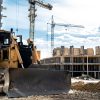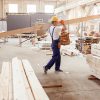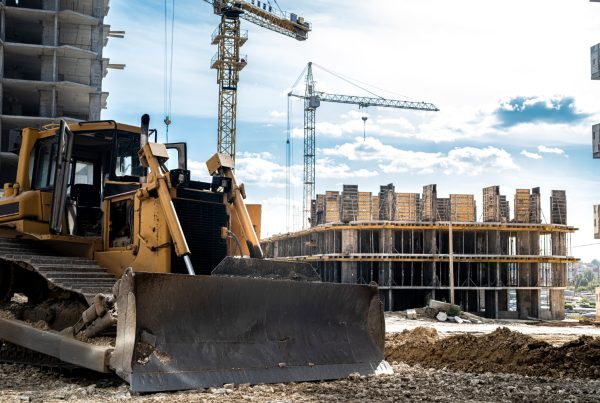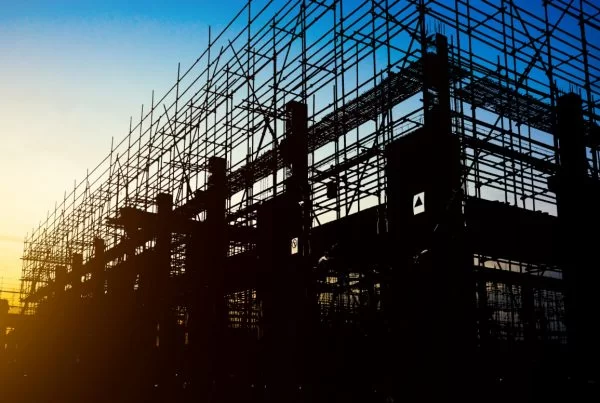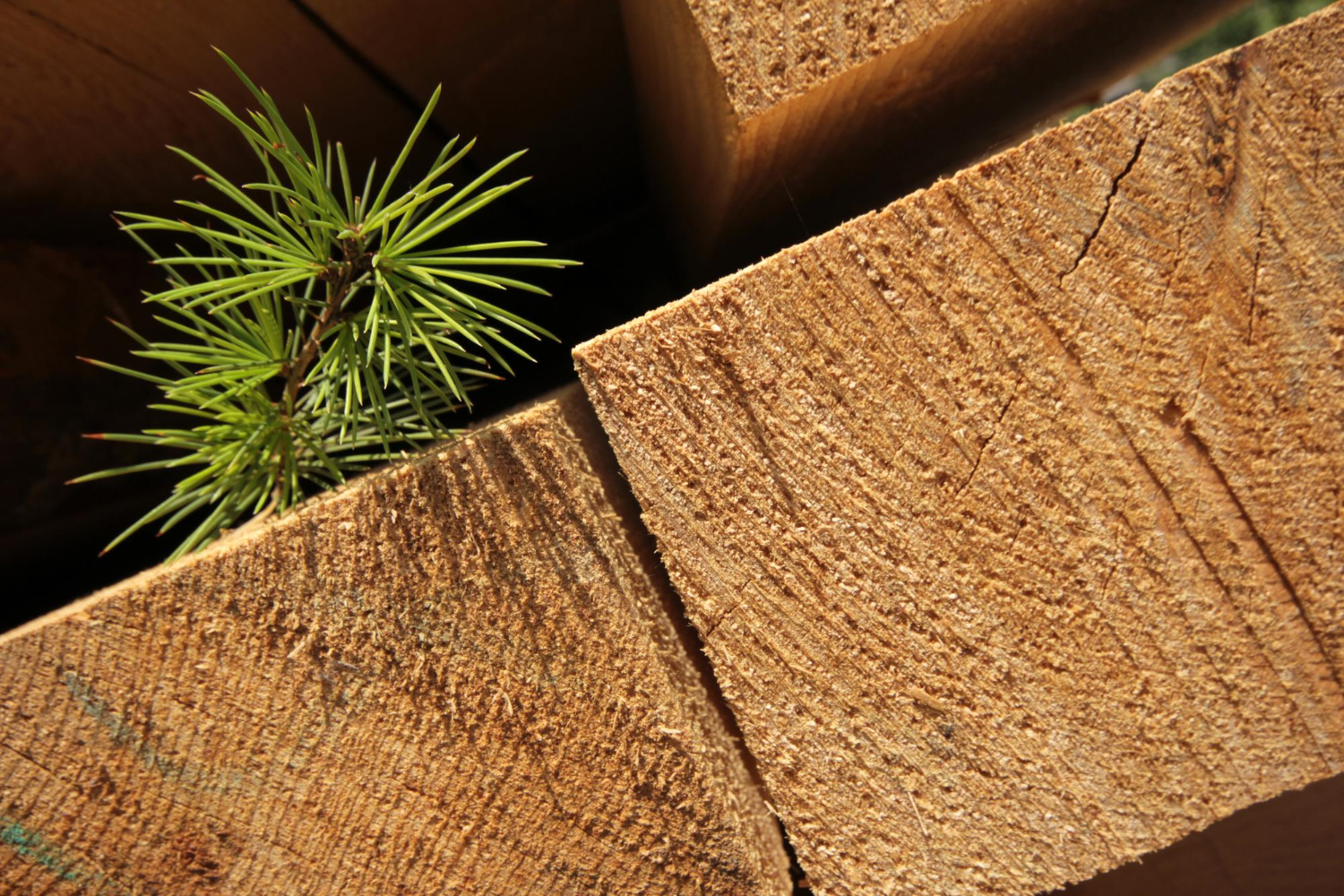
As cities strive to meet climate goals, reduce emissions and create greener urban environments, timber has emerged as a powerful ally in the movement toward sustainable construction. Unlike concrete or steel, timber is a renewable resource, naturally abundant, and remarkably efficient in its energy profile. It’s not just an alternative – it’s a superior solution in many ways.
Sustainably harvested timber captures and stores carbon dioxide throughout its lifecycle. Trees absorb CO₂ during their growth, and that carbon remains locked in the wood even after it is processed into beams, planks, or panels. By replacing traditional, emissions-heavy materials, timber construction helps reduce the overall carbon footprint of buildings, a crucial step in addressing the climate crisis.
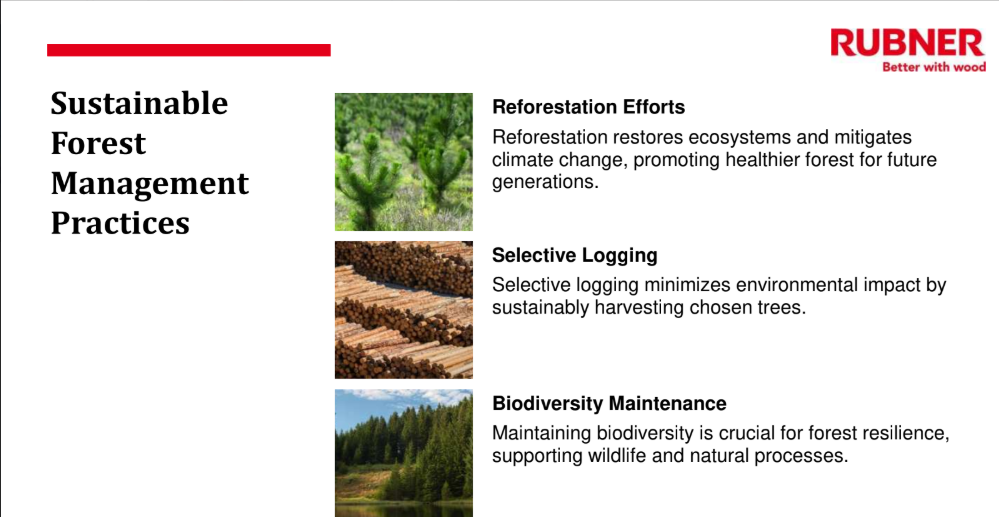
But sustainable use of timber doesn’t stop at harvesting. Responsible forestry practices play a critical role. Reforestation ensures that for every tree used, others are planted to continue the cycle of carbon capture. Selective logging, as highlighted in the presentation, helps minimise ecological disruption and maintains forest biodiversity. These practices support ecosystems while providing a steady supply of renewable building material.
The Life Cycle Analysis (LCA) of timber construction further supports its environmental advantages. Timber’s energy consumption during extraction, processing, and transportation is significantly lower than that of steel or concrete. During use, timber contributes to better insulation and indoor climate control, reducing energy costs. And when its time is up, wood can be reused, repurposed, or recycled – reinforcing circular economy principles
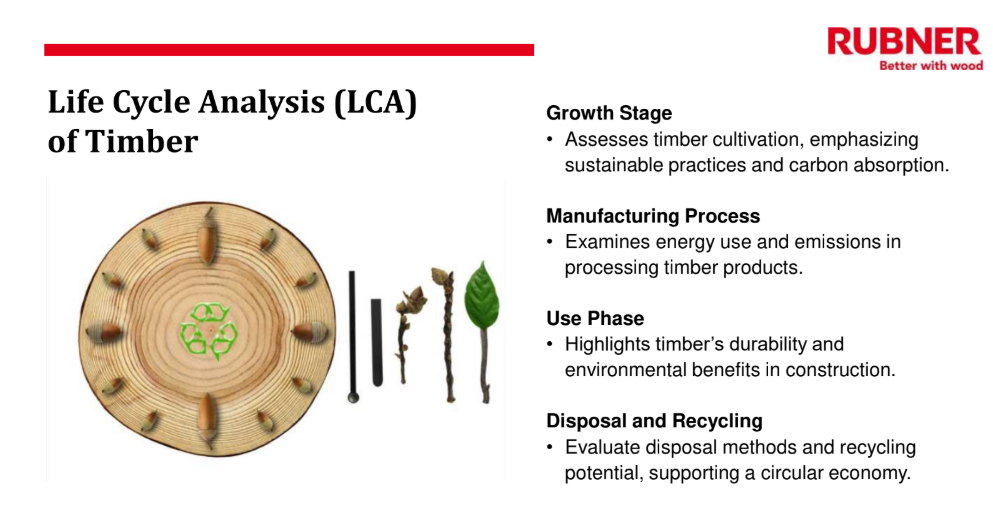
In a world increasingly focused on ESG metrics and green certifications, building with timber checks all the right boxes. It supports the Sustainable Development Goals, enhances building performance, and contributes to healthier, more livable cities. The environmental benefits are not just theoretical – they are measurable, repeatable, and already being implemented globally.
With science, regulation, and consumer preferences all shifting toward eco-conscious choices, timber is no longer a niche material. It is a climate-conscious construction staple, ready to redefine the way we build.
Related articles
Part 1: Unlocking the Future of Construction Through Timber


